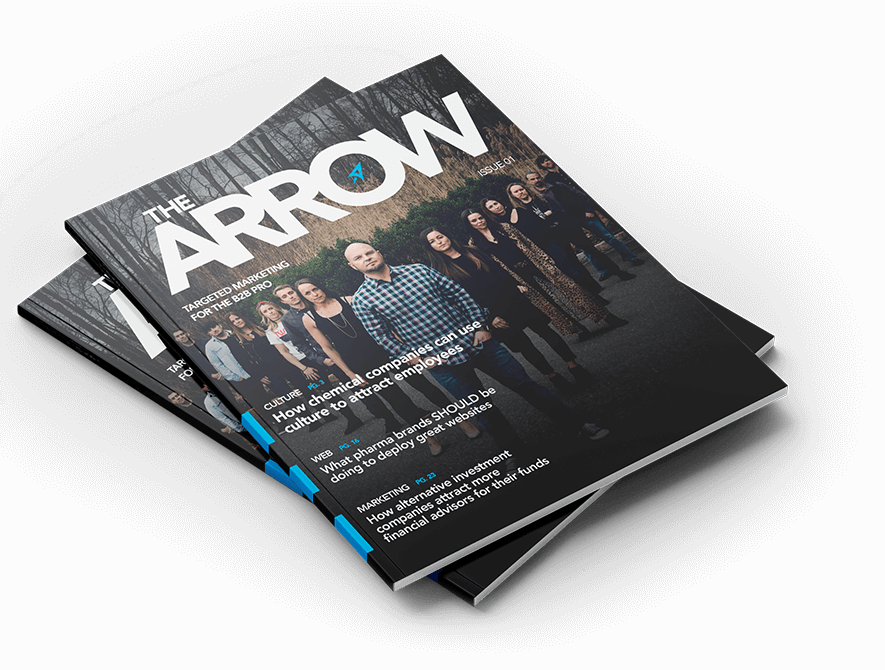Website Development Services Tailored for Your Business
Chris Mulvaney is the CEO of CMDS. I make things... I’m the creative entrepreneur with passion for (re)making brands and inventing solutions to problems no one knows exist.
Website Development Services Tailored for Your Business
The first step when it comes to the design and development of a business website is to define who your audience is that you’re trying to reach. Are you going to be targeting other businesses or consumers? Will your customers be local or national? Are you trying to reach a certain demographic? These are important questions to ask, because when it comes to website development services, the one-size-fits-all approach simply doesn’t work.
Websites for both B2B (business-to-business) and B2C (business-to-consumer) have some similarities. However, the needs of each audience differ greatly, which must be factored in first.
Let’s take a look at two main factors that influence those key differences.
B2B and B2C Website Development and Design Considerations

Before we dive into the differences between B2B and B2C website development strategies, we’re going to highlight a few similarities first.
All websites should have a responsive design, with intuitive and simple navigation. They should be optimized for page speed, be secure, and direct the user to take the next step with ease.
Not much differs in how the process for website development services works behind the scenes in either B2B or B2C. They both have nearly identical workflow, processes, milestones, prototyping, testing, etc.
So, what we’re going to address below will have more to do with your goals as a business, how your audiences may differ from others, what their motivators are…and how you can entice them to take action.
OK, let’s get to it.
Target Audience

The target audience is basically your buyer. Who is going to be searching for your product or service, making the decisions and purchasing?
Considerations for B2B Audiences
For a B2B website, it’s not uncommon to experience longer delays in the buying process as more than one individual within a company likely has to assess the potential purchase before coming to a decision.
In fact, the Nielsen Norman Group has conducted studies about the purchasing behavior among decision makers, which, as you may expect, tends to complicate things. They explain,
“Our studies revealed that there was typically a lot of dialogue and discussion between decision makers (known as ‘choosers’) and key staff that actually use the products (‘users’) during the purchase process. Frequently, a potential ‘user’ would become the main researcher, and would later present options to decision makers. Once this ‘user’ decided on a favorite product, he often became a proxy or surrogate for that product, seeking ways to justify it to his boss (the ‘chooser’).”
In reality, the decision making process could takes days, weeks or longer, before anything is finalized. To support the vast amount of research necessary for B2B, websites should be focused on educating the researcher with plenty of robust and descriptive content and helping the buyer come to a decision.
In addition, social proof can prove to be very useful. From client testimonials and case studies to high-profile company logos of current partners and high-level awards, nurture the lifecycle of the decision making process by building trust and sealing the deal.
Considerations for B2C Audiences
B2C websites have many opportunities to be creative with dynamic content and engaging copy that promotes a sense of urgency. This audience will still want to research your service or product, but you can expect the turnaround time to be much faster. As opposed to a business team needing to weigh-in on a particular purchasing decision, B2C buyers are often seeking an urgent solution and are motivated to make a decision.
In response, it’s critical that a website is designed to nurture them along the sales process and make it convenient for them to take the next step. Here’s where crafting a buyer persona can be an extremely helpful strategy. Read more about creating a buyer persona on our blog, “Define Your Buyer Persona to Make Better Marketing Decisions.”
Motivations

Having a clear understanding of your audience’s motivations directly helps in the development of a website. What are their goals, needs, wants and pain-points?
Motivations Behind B2B Websites
In order to sell the big decision-makers on your product or service, B2B websites must aim to solve a very specific problem and validate ROI. Therefore, these websites should clearly explain the solution, define how it works and convince the audience it will make their business better in some way.
But, there’s little point in trying to immediately go in for the kill. As mentioned above, courting B2B takes longer and requires an investment to build a relationship of trust, first. Instead of strong calls-to-action, like BUY NOW, SIGN-UP NOW, NOW, NOW… focus on practical applications such as building your organization’s credibility and showcasing your thought-leadership. This way you can reach prospective buyers at different points of the process, whether they’re first learning about your brand, doing deep research, comparing price options, looking for a demo, etc.
Note that while minimal designs with conservative copy is typical for these websites, that doesn’t mean they have to be boring. Afterall, CFOs like fantasy football, too! B2B websites should be dynamic, engaging and highly functional. Because of this, user experience is just as important.
Motivations Behind B2C Websites
Generally speaking, B2C customers are driven by the perceived emotional benefits of products or services. They have arrived to your website to fulfill an urgent need or find a stellar deal, this is where emotional messaging, rather than a ton of information, can prove to be effective.
Don’t overload this audience with content or a maze of CTAs that will bounce them right off your page. The use of vibrant images that appeal to consumers’ senses, compelling headlines, clear calls-to-action and a seamless buying journey (with minimal steps) will do the trick to make users convert.
Keep in mind that many B2C consumers tend to make a purchase within their first few visits; therefore, first impressions are more important than ever.
Do You Need Website Development Services That Specialize in B2B or B2C?

As you can see, the approach for B2B and B2C website development services is based on unique goals, audiences and motivators.
But, it all basically boils down to one key take-away: If the main goal for B2B is to establish credibility and trust and the main goal for B2C is centered around user experience, it’s clear: always keep your customer in mind.
Read More: Quest for the Holy Grail: Finding a Web Design Agency Near Me
Read More: 7 Reasons Why You Should Invest in Web Design Services
Want to know more? CMDS provides website development services for B2B and B2C clients nationwide. Fill out our online form or give us a call at 732.706.5555 to start your next website project today!





